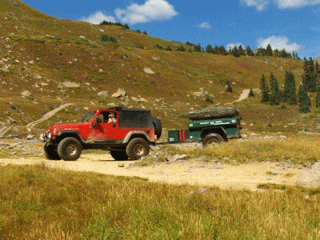After getting home late, cleaning up the trailer as well as the Jeep and gear, my own trailer was ready to be shipped to me within the week. The trailer I had used for the month was really quite spectacular. I would have been happy to own it myself and will recommend it to anyone looking into off-road trailers. I kept Clint (the owner) informed as the trip progressed so he was pleasantly surprised to see the trailer wasn’t nearly as bad off as he had imagined. I felt terrible and asked Clint to keep me informed of any expenses related to repairing the trailer. As of this writing, nothing has come back to me; but knowing Clint, the trailer is better than new now.
Lots of little things can make an overall positive difference in the durability of a product. I am not the most patient of individuals, so I was constantly calling Mario about updates and such on my trailer. I spoke with Mario way more than I am sure he wanted, but he was quick to tell me some differences between what I had just used and what I was getting. Even though there was nothing lacking in the loaner trailer, some nice improvements have been made to current production trailers. Some of these include:
• Upgrade to Paint Locked surface treated sheet metal body panels vs. conventional cold rolled sheet metal,
• Improved air spring mounts with lengthened gussets and ¼” steel vs. 3/16” steel,
• One piece tailgate frame vs. four piece,
• Rancho RS 9000 shocks with .710 thick piston rod vs. the Rancho RSX with a .625 thick piston rod,
• Waterproof electrical butt splice connectors used on tail light and brake wiring,
• Trailing arm pivot rod mounting plates thickened to 3/8” vs. ¼”,
• New proprietary camber and toe in adjustment feature,
• Pivot rod material changed to 165,000 psi Stress Proof steel vs. 85,000 psi cold rolled steel,
• Lid bulb seal upgraded from 5/8” x 3/8” to 7/8” x ½”,
• Rivets upgraded to stainless steel vs. aluminum,
